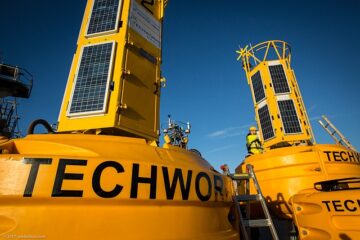Challenge(s)
How can the environmental impacts of ports be reduced?
Good practice
Legislation to protect biodiversity in the port
The regulations imposed by national and supranational environmental laws provide a chance to embrace a proactive stance rather than a reactive one, by embracing dynamic and forward-thinking environmental strategies. The implementation of technological solutions for monitoring the impacts of port activities on the local environment can help regulate the emissions of the port and keep the local biodiversity and city with limited pollution.
This good practice also includes objectives 10.2 (Conducting regular surveys of biodiversity in the City Port territory and publishing the findings) and 10.4 (Supporting the efforts of civil society to protect fauna and flora in the City Port territory) of the AIVP's Agenda 2030.
Case study
In 2017, TechWorks Marine Ltd was awarded a €1.8 million deal with Dublin Port Company (DPC) to monitor environmental conditions in Dublin Bay. The project entails the use of four buoys placed at strategic points in the bay, to provide real-time data on water quality, waves and currents. Known as the CoastEye Monitoring Buoys, they can also use sonar to detect whale and dolphin activity. The data from the buoys is forwarded to the Port of Dublin’s environmental experts every twenty minutes by 4G, or satellite if necessary. This constant monitoring of the port’s conditions allows for ultimate decisions to be made about movements within the port.
Two surveys using the CoastEye buoys were conducted to analyse the water quality of the port: one from October 2017 until March 2018 and the second from October 2019 until March 2020. Both surveys yielded similar results, either moderate or good qualities, with samples taken from different locations in the bay.
These hydrological assessment surveys are part of the Alexandra Basin Redevelopment (ABR) Project, a major part of Dublin Port Company’s Masterplan 2040, added to the DPC masterplan in 2016 and still active. A major goal of the ABR project is the successful construction of 3km quay walls, the deepening of the harbour for the accommodation of more and bigger vessels, and the preservation of the Victorian-era industrial structures located at Dublin’s port. As part of the pre-construction phase, the port authority believed that it was necessary to get a grasp on the water quality of the bay and strive to maintain it during and after the construction of the quay walls.
Such a project corresponds not only with the spatial needs of the port by expanding the port activities area, but also by gathering data on the emissions produced and trying to maintain the numbers stagnant or by reducing them to keep the surrounding environment as healthy as possible. The decision to monitor and preserve biodiversity is in line with the UN Sustainable Goals on Sustainable Cities, number 11, along with Responsible Consumption and Production, number 12, and the Preservation of Life Below Water, number 14.
Additional informations :
Irish Times article: CoastEye Mini-Buoy: Monitoring the marine environment
TechWorks Marine Coastal Water Quality Assessment using MiniBuoy (video)
Further information about the TechWorks Marine Ltd activity in Dublin bay
Alexandra Basin Redevelopment (ABR) Project
2019 and 2021 report of hydrological assessments published by DPC (pdf)

